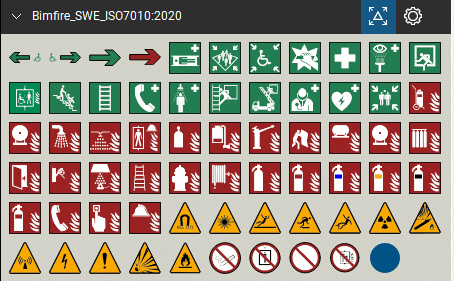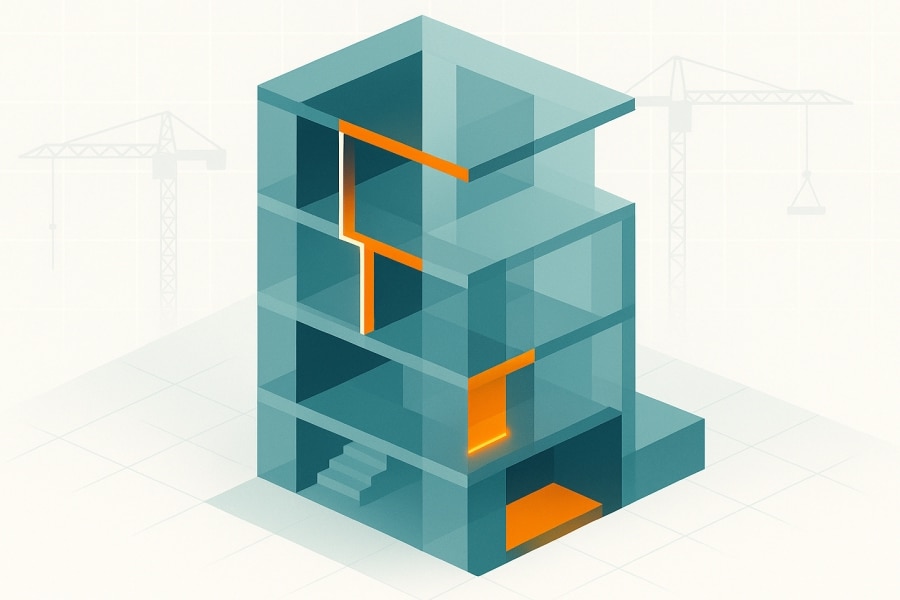In construction, the transition from analog to digital workflows has significantly enhanced efficiency and accuracy. One such transformation is happening in the fire safety sector, spearheaded by tools like Bluebeam Revu and Naviate Bimfire.
Historically, fire safety planning has been a 2D-focused, paper-based process. Fire safety engineers often relied on hand-drawn symbols and annotations on paper plans, which were prone to errors and inefficiencies. The need for a more streamlined and accurate approach became evident as fire safety requirements grew more complex.
Enter Bluebeam Revu, a PDF-based software widely used in the construction industry, and Naviate Bimfire, a 3D plugin for Revit. These digital tools offer a comprehensive solution for fire safety planning, enabling a seamless transition from 2D to 3D workflows. Together, they provide a powerful platform for fire safety engineers to work more effectively.
The Role of Bluebeam Revu
Bluebeam Revu is often dubbed the “Excel of the construction industry” due to its widespread use and versatility. It allows users to create, edit, mark up and collaborate on PDF documents, making it an ideal tool for fire safety planning. David Sjöquist, a seasoned Bluebeam professional and business development manager at technology services firm Symetri, has spent a lot of time building custom Revu profiles for fire engineering and safety professionals.

The real game-changer, Sjöquist said, lies in the standardized profiles and workflows in Revu developed for fire safety engineers. These profiles incorporate local standards and best practices, ensuring consistency and compliance across projects. For instance, in Sweden, specific color codes and symbols are used to denote different fire safety elements, such as fire doors, compartmentations and escape routes. These standardized profiles make it easy for engineers to create accurate and compliant fire safety plans quickly.
Collaboration with Naviate Bimfire
While Bluebeam Revu excels in 2D workflows, Naviate Bimfire brings the power of 3D modeling to fire safety planning. This plugin for Revit allows engineers to integrate fire safety elements into building information modeling (BIM) models. The collaboration between Bluebeam Revu and Naviate Bimfire enables a comprehensive approach to fire safety, covering both 2D and 3D aspects.
One of the key advantages of this integration is the ability to transition seamlessly between 2D and 3D workflows, according to Sjöquist. Fire safety engineers can use Bluebeam Revu for initial planning and markups, then switch to Naviate Bimfire for more detailed 3D modeling. This flexibility ensures that all aspects of fire safety are covered, from site inspections to detailed evacuation plans.
Addressing Industry Challenges
The fire safety industry faces unique challenges that make digital transformation particularly important, Sjöquist said. One of the main drivers is the increasing demand for BIM compliance across Europe. Many countries are now mandating that fire safety processes be integrated into BIM models, pushing the industry toward digitalization.

The journey to digitalization involves several steps. Initially, many fire safety engineers still work with pen and paper or basic PDF tools. However, the integration of Bluebeam Revu and Naviate Bimfire allows for a more sophisticated approach, combining the precision of 3D modeling with the ease of use of PDF-based workflows.
Practical Applications
The practical applications of Bluebeam Revu and Naviate Bimfire in fire safety planning are vast. These tools cover every aspect of the fire safety journey, from site inspections to creating detailed fire attack plans. For instance, engineers can use Bluebeam Revu to mark up site plans, indicating the placement of sprinkler heads, fire doors and emergency lighting. They can also create evacuation plans, complete with standardized symbols and color codes.
In Naviate Bimfire, these elements can be modeled in 3D, providing a more comprehensive view of the fire safety plan. This 3D integration is particularly useful for complex projects where spatial relationships and interactions between different elements need to be visualized accurately.
The Future of Fire Safety Planning
The transition to digital workflows in fire safety planning is not just a technological shift but represents a fundamental change in how the industry operates, according to Sjöquist. By adopting tools like Bluebeam Revu and Naviate Bimfire, fire safety engineers can work more efficiently, accurately and collaboratively. This digital transformation is crucial for meeting the increasing demands of modern construction projects and ensuring the highest standards of fire safety.
The integration of Bluebeam Revu and Naviate Bimfire is revolutionizing fire safety planning. These tools provide a comprehensive solution that combines the best of 2D and 3D workflows, addressing the unique challenges of the fire safety industry. As the demand for BIM compliance grows, the adoption of these digital tools will become increasingly essential, paving the way for a safer and more efficient construction industry.











